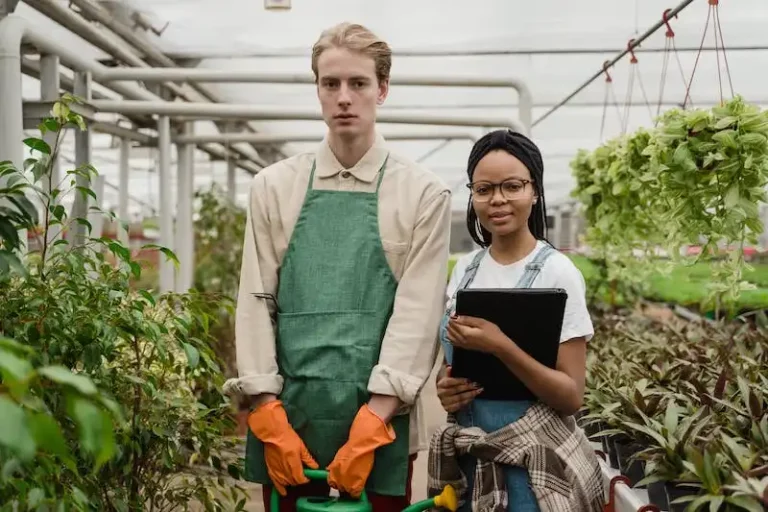Orchids (Orchidaceae) are a relatively easy houseplant to care for with a big payoff when their colorful flowers bloom. These unique flowers are known for their big leaves, long thin stems, and clusters of small bright flowers. There are over 25,000 different types of orchids and orchid hybrids, according to Gardening Chores. The biggest difference when caring for an orchid compared to other house plants is the type of soil needed. Orchids need loose and chunky soil for the roots to get enough air. Water retention is also important because the soil should hold some moisture while allowing most of the water to drain away. A common mixture used for orchids is 80% orchid bark and 20% sphagnum moss (via Just Add Ice Orchids).
Orchids go through phases of blooming flowers and being dormant. So don’t think your plant is dying when all of its flowers have gone away. Keep watering it and, depending on the type of orchid you have, new buds will soon bloom again. But if you’re still a novice, here are 15 types of orchids that make the easiest houseplants.
1. Moth orchid
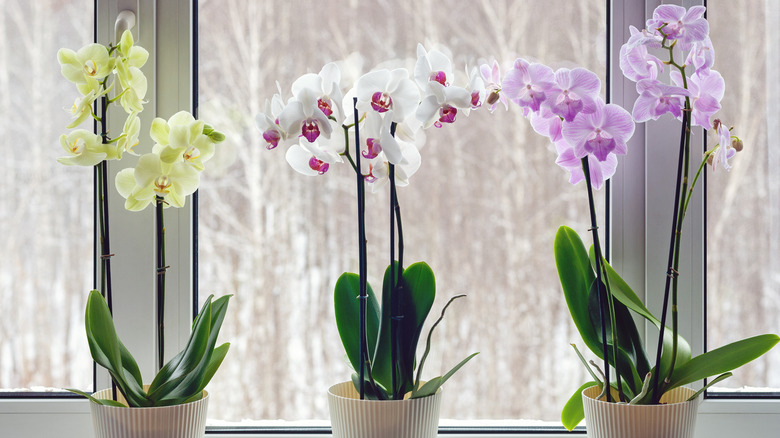
The moth orchid (Phalaenopsis) is the flower that everyone pictures when thinking of orchids. It is the most common type of orchid, likely because of how beginner-friendly it is. With minimal effort, the Moth orchid will bloom for months, per The Spruce. This orchid uses its energy to produce blooms instead of new growth, so it satisfies beginners looking for a beautiful flower.
Sunlight Needs: Bright shade
Water Needs: Weekly or every two weeks if in bloom
2. Cattleya orchid
The Cattleya orchid (Cattleya aurantiaca) is a good choice if you’re looking for a big plant. Its flowers can span 8 inches, according to Gardening Chores. This type of orchid has flowers that smell like vanilla and cinnamon. Cattleyas are also frequently used in corsages and bloom in white, purple, yellow, orange, pink, or red. Blue orchids are often sold, but blue is not a natural color for orchids (via Orchid Plant Care). Instead, these are white orchids dyed blue.
Sunlight Needs: Bright shade
Water Needs: Weekly and mist to add humidity
3. Lady of the Night orchid
Nuk2013/Shutterstock
The Lady of the Night orchid (Brassavola nodosa) has white flowers with long green leaves that grow upwards. Its strong gardenia fragrance gives it its name, per OrchidWeb. If you live in a colder climate, this type of orchid is a better choice for you. The Lady of the Night will bloom multiple times a year, and you can encourage blooming by watering it less frequently (via Better Homes and Gardens).
Sunlight Needs: Bright shade
Water Needs: Weekly
4. Bamboo orchid
Ideation90/Shutterstock
As the name suggests, the bamboo orchid (Arundina graminifolia) has stems that resemble bamboo. It’s a hearty orchid that can withstand colder weather and direct sunlight, according to Missouri Botanical Garden. It has beautiful pink and white blooms that last longer than other orchids. If you live in a humid area, this would be a good orchid to grow outdoors, as it can grow to be four to six feet tall.
Sunlight Needs: Bright shade
Water Needs: Weekly
5. Pansy orchid
Jack Kajon/Shutterstock
The pansy orchid (Miltoniopsis) is a type of orchid with flowers that look like pansies but smell like roses. Their petals are white with either pink or red stripes and spots. However, these beautiful flowers only bloom twice a year. Gardening Chores explains that this is another orchid that needs a humid environment, which can be done by misting with a spray bottle, purchasing a pebble tray, or a small humidifier.
Sunlight Needs: Bright shade
Water Needs: Weekly and mist to add humidity
6. Jewel orchid
Elzloy/Shutterstock
The jewel orchid (Ludisia discolor) is unique. Its leaves resemble a rubber plant more than an orchid. The leaves are large, so dark they’re almost purple, and have red, orange, or white stripes. If your home doesn’t get a lot of light, this is the orchid for you. According to Our House Plants, this is also the orchid of choice if you plan on propagating because of how easy it is.
Sunlight Needs: Low – Medium sun
Water Needs: Weekly, and mist to add humidity
7. Dendrochilum orchid
Martin Fowler/Shutterstock
According to the Orchid Republic, the Dendrochilum orchid (Dendrobium bigibbum) is perfect for beginners. As long as you put it in a bright, south facing window and water it daily, your orchid will thrive. It has long rows of tiny pink, purple, or white flowers that bloom for longer than other orchids. And if you fertilize it a provide bright light, it is easy to encourage blooming in the spring and summer.
Sunlight Needs: Bright shade
Water Needs: Daily
8. Aspasia orchid
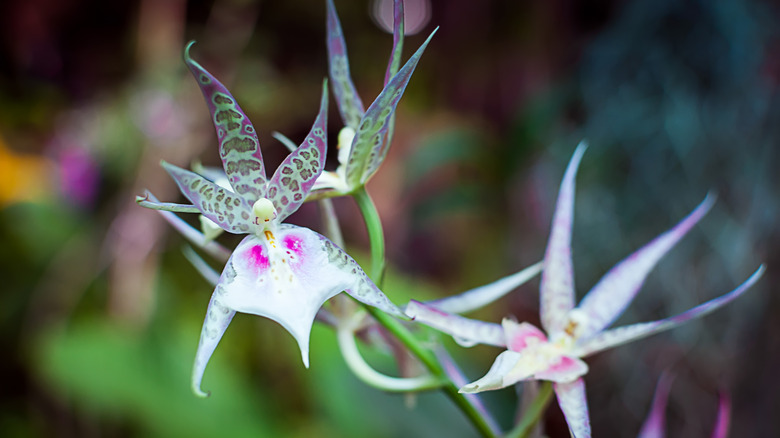
Irina Soboleva S./Shutterstock
If you don’t have a lot of light in your home and are looking for an orchid, the Aspasia orchid (Aspasia lunata) is what you need. They only need a moderate amount of light and are tolerant of colder temperatures, so they’ll be happy sitting on your windowsill or a table distanced from a bright window, per Orchid Bliss. Their flowers bloom in the shape of a star, with long thin petals.
Sunlight Needs: Bright shade
Water Needs: Weekly
9. Lycaste orchid
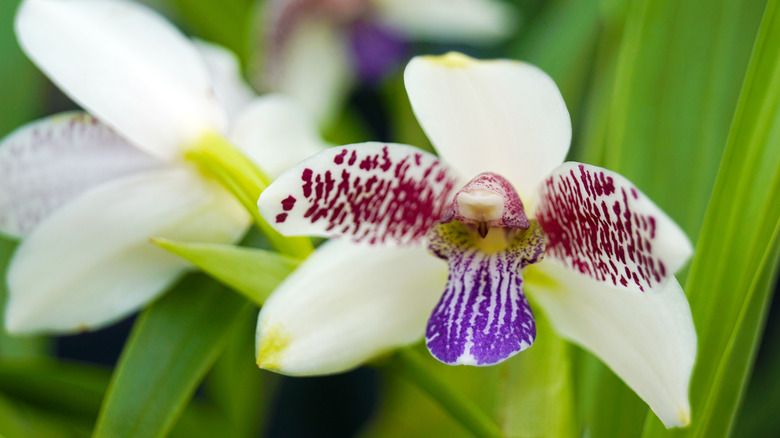
Natalia Van D./Shutterstock
The Lycaste orchid (Lycaste spp.) has beautiful, triangular, white, pink, red, and lavender-colored petals. Per the American Orchid Society, water it frequently when this orchid is in bloom. Once its flowers fall off, water it sparingly. It’s also important that you only wet the dirt and not get water on the flowers and leaves. This orchid also has a dangerous side. Once its flowers fall off, there are sharp points on its pseudobulbs that can cut through the skin (via The Spruce).
Sunlight Needs: Bright shade
Water Needs: Weekly
10. Vanilla orchid
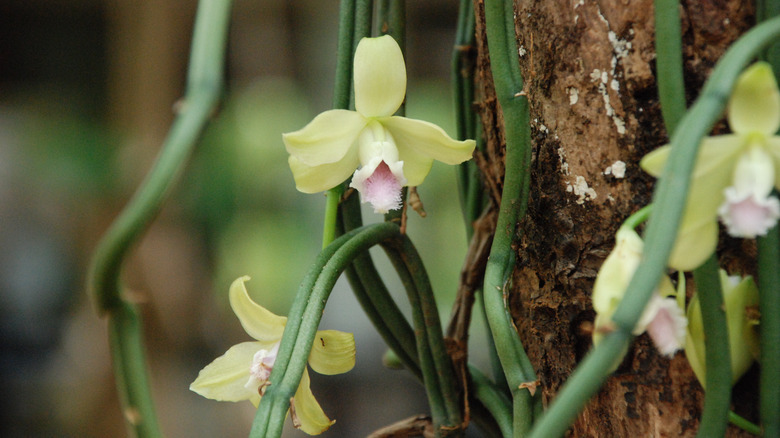
Sirimat Kamsaiin/Shutterstock
Not many people know that vanilla actually comes from an orchid — the vanilla orchid (Vanilla planifolia), to be exact. Its yellow flowers only bloom for one day, according to Everything Orchids. The pods used for vanilla extract are also produced during the blooming period. Caring for this plant is easy, but it can be hard for beginners to encourage fruit growth.
Sunlight Needs: Bright sun in the morning, bright shade in the afternoon
Water Needs: Weekly
11. Nun’s orchid
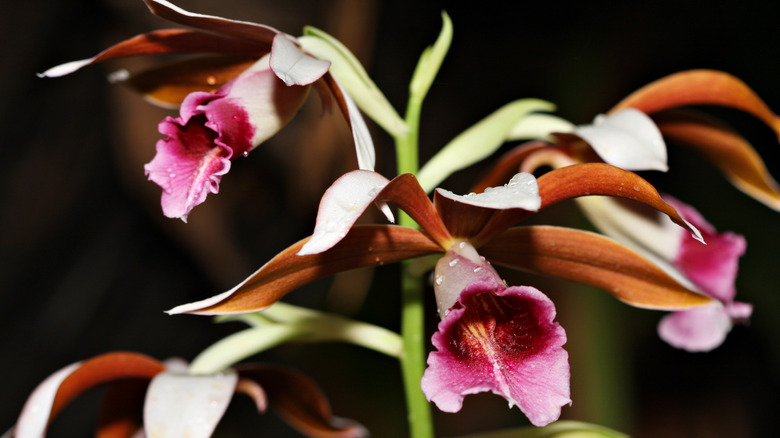
Kriengkrai Seetapan/Shutterstock
The nun’s orchid (Phaius tankervilliae) got its name because of its hooded flower petals. This is another large orchid whose flowers can span up to five inches across, according to the University of Florida. It’s a good choice for beginners because it will adapt to its environment. It prefers warmer temperatures, but will tolerate the cold. The most important part of caring for this type of orchid is making sure its soil remains moist.
Sunlight Needs: Bright shade
Water Needs: Weekly
12. Cymbidium orchid

Nnattalli/Shutterstock
Cymbidium orchids (Cymbidium spp.) are hardier than other orchids on this list, making them perfect for beginners. They can tolerate colder temperatures and even bloom in the winter, notes Better Homes and Gardens. To achieve this, you should fertilize monthly. Cymbidium is another type of orchid that is often used in corsages since they bloom beautiful flowers in white, pink, red, orange, yellow, green, cream, or burgundy (via Orchids Made Easy).
Sunlight Needs: Bright shade
Water Needs: Weekly
13. Zygopetalum orchid
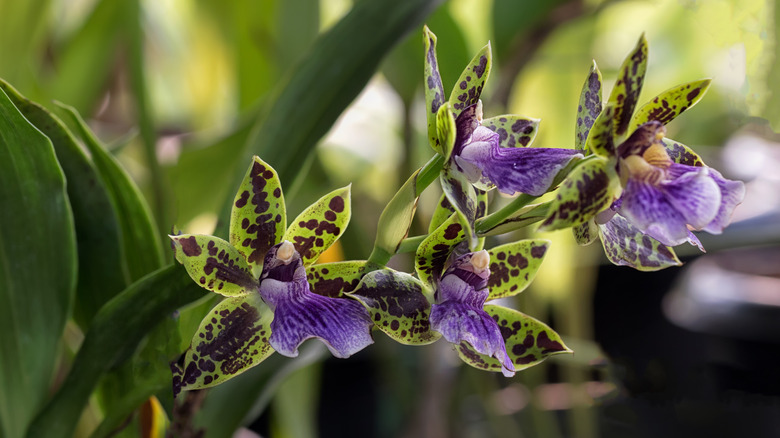
Puspa Mawarni168/Shutterstock
The Zygopetalum orchid (Zygopetalum spp.) is great for beginners because of how adaptive it is to its environment. According to the American Orchid Society, if you keep it moist and in the shade, it can handle the heat of summer. If you let it dry out, it can handle the cold winter nights. The Zygopetalum orchid also has flowers that smell like hyacinth (via RePotme).
Sunlight Needs: Medium shade
Water Needs: Weekly, and mist to add humidity
14. Butterfly orchid
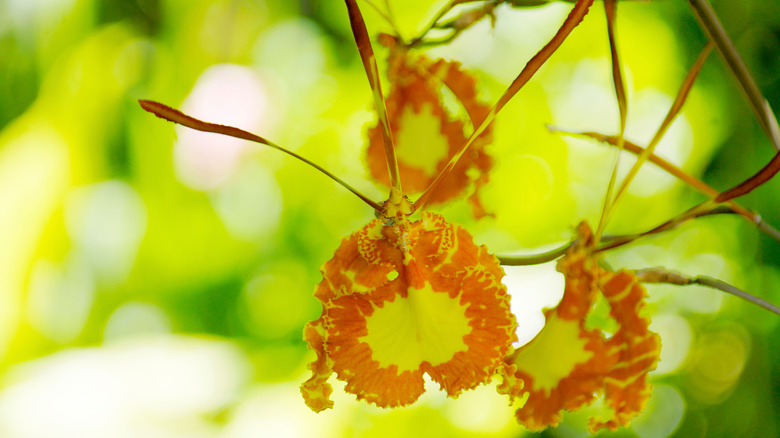
Natalia van D/Shutterstock
The butterfly orchid (Psychopsis papilio) has flowers with patterned petals and long thin stigmas that resemble butterflies. Butterfly orchids can handle a first-time plant owner since they are strong enough to survive over and under watering, per OrchidsAmore. This orchid is also a good choice if you plan to mount your orchid on a slab of wood and hang it on the wall. Just be ready to water it frequently since climbing orchids tend to dry out faster and need to be watered a minimum of three times per week (via Carter and Holmes Orchids).
Sunlight Needs: Bright shade
Water Needs: Weekly or daily in the summer
15. Lady’s slipper orchid
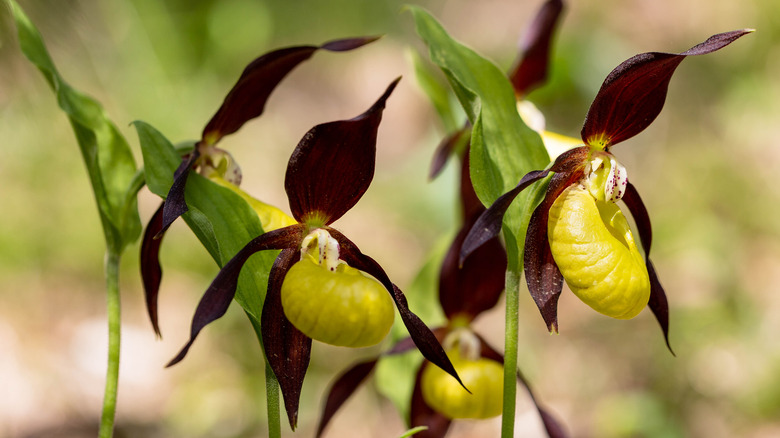
Serge Goujon/Shutterstock
The lady’s slipper orchid (Paphiopedilums) got its name because of the shape of its blooms. It is a rare flower that can be seen growing at the base of trees in nature, per Gardening Know How. It doesn’t need bright light like other orchids but can be picky about what it is watered with. Distilled water or rainwater would be your best choice. Otherwise, this orchid is great for beginners.
Sunlight Needs: Medium shade
Water Needs: Weekly
